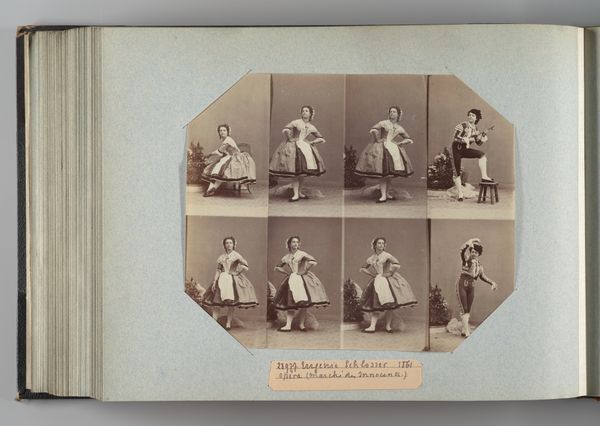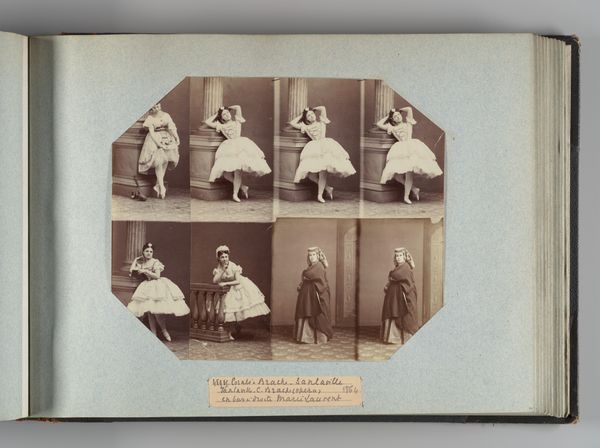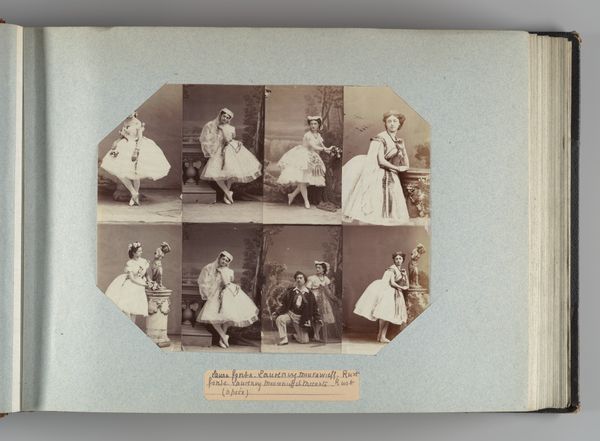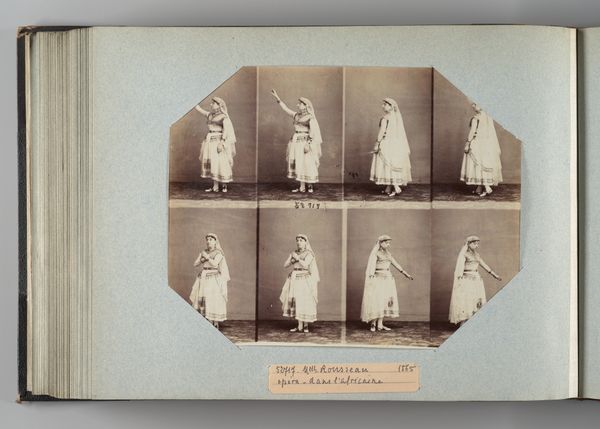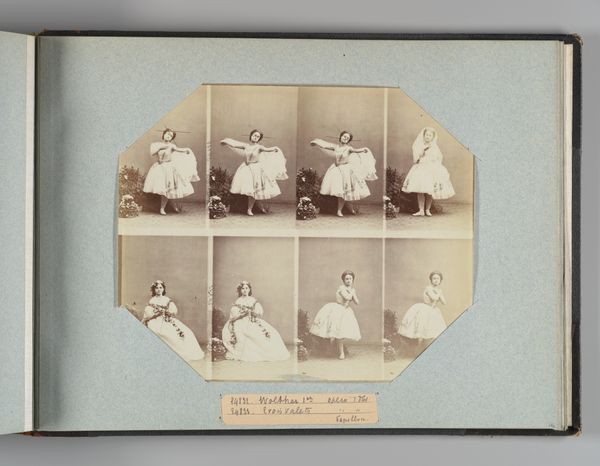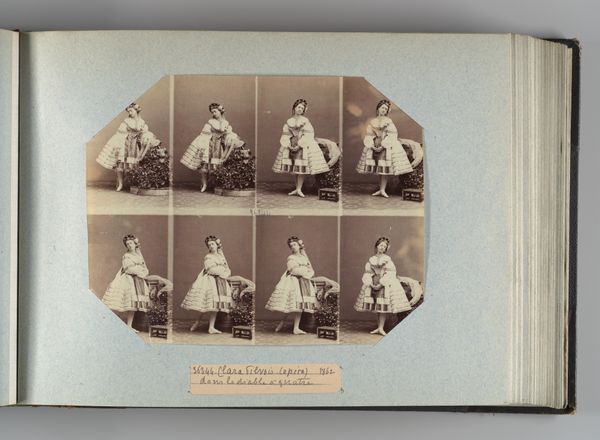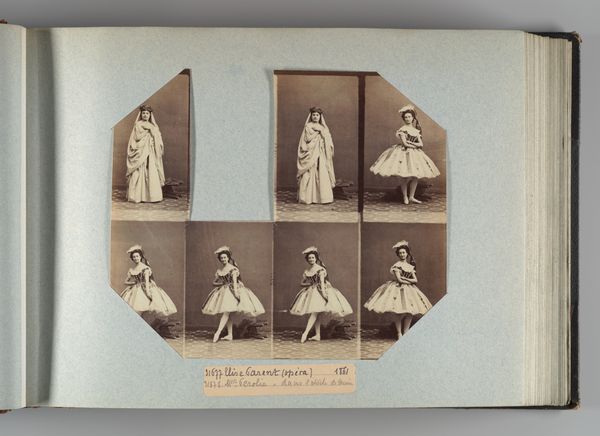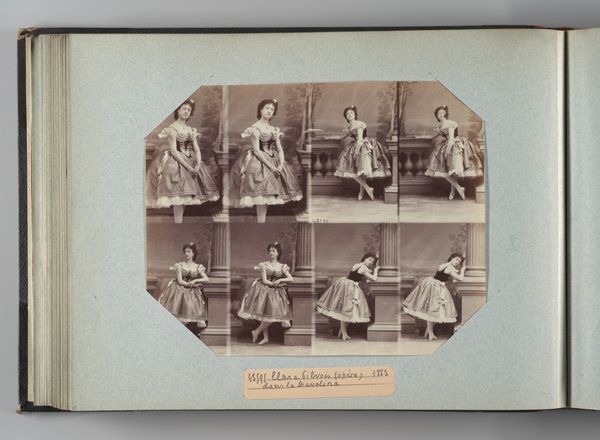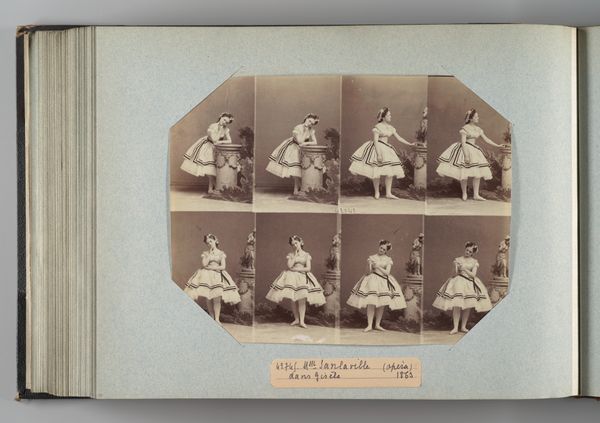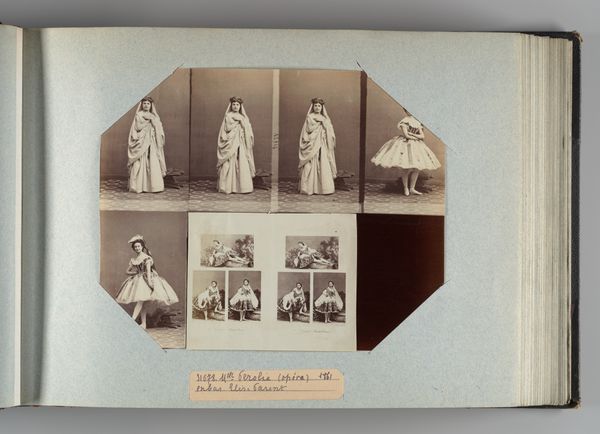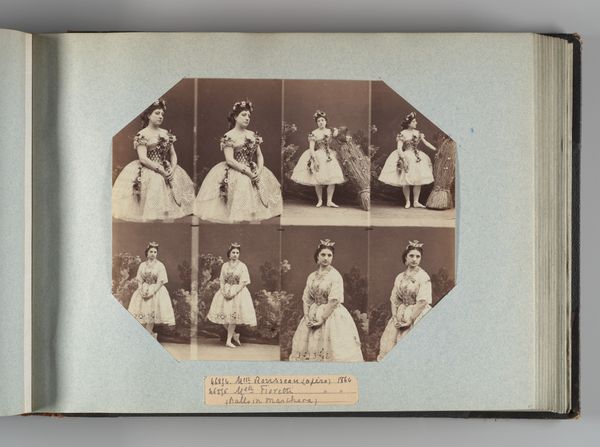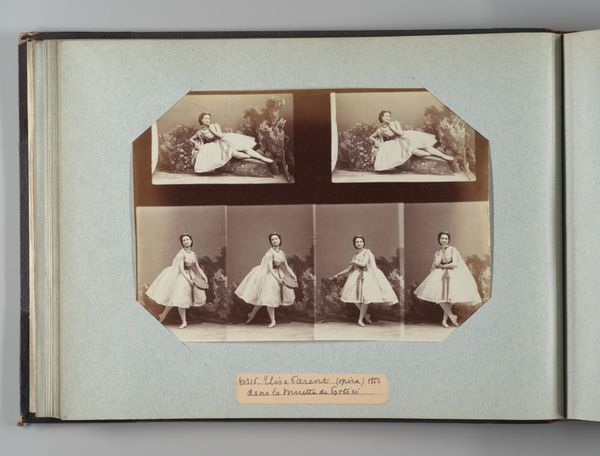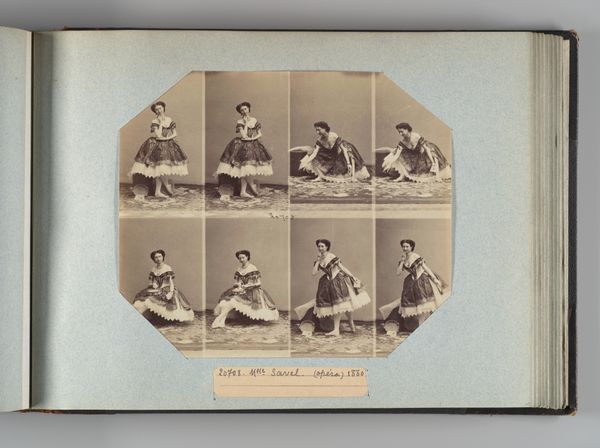
Blanche Montaubry; Sanlaville; Coralie Brache 1864
0:00
0:00
photography, albumen-print
#
portrait
#
photography
#
group-portraits
#
albumen-print
Dimensions: Image: 7 3/8 × 9 1/4 in. (18.8 × 23.5 cm) Album page: 10 3/8 × 13 3/4 in. (26.3 × 35 cm)
Copyright: Public Domain
Curator: Here we have an albumen print from 1864 by André-Adolphe-Eugène Disdéri, part of a larger collection here at the Met. It's titled "Blanche Montaubry; Sanlaville; Coralie Brache." What's your initial reaction? Editor: Well, I am immediately struck by the dual nature of the imagery—a stark contrast between the figures. The gentleman above exudes a certain Victorian-era stoicism, whereas the ballerina below seems to embody lightness and grace, an almost ethereal quality. Curator: Indeed. Disdéri was a pioneer in carte-de-visite photography. It really changed portraiture as we knew it. These were essentially calling cards with your photo on them. Imagine the social currency that came with such elaborate presentations! And here, we have what appears to be an early example of celebrity culture being marketed. Editor: Absolutely. And the poses—repeated almost identically for each frame—speak volumes. Note how the gentleman’s postures echo authority, and the ballerina's echo submission and, perhaps, fleeting beauty. It underscores societal expectations placed upon these figures and the roles they occupied. What could these roles represent? Is this about theater? Who was allowed on the public stage, and what message are they transmitting? Curator: Fascinating point. The ballerina, undeniably posed in her costume, offers a potent symbol of spectacle. Meanwhile, the gentleman, seemingly a patron or perhaps an influential figure in the theater world, appears as the stabilising force—reflecting the structures of power and the gatekeepers who controlled access to cultural spaces in 19th century Paris. We see how new media creates social roles as much as it documents them. Editor: And the balustrade feature repeats across each image set like some theatrical support, visually linking the separate people or identities together in the overall book. But also notice that they are still separate. I see the roots of modernity taking form; its psychological terrain. Curator: These smaller photographs democratised representation but also arguably commodified individuals. We can speculate, based on surviving receipts and writings, the sitter would pay based on the number of prints they commissioned, not so different from paying for broadcasting rights today. This work also highlights a critical junction: how art institutions began documenting performing artists and creating an image archive that both reflected and influenced public perceptions. Editor: This is really so indicative of the birth of modern celebrity. Seeing these two types mirrored next to each other tells a silent, profound story about what this form was building as a social script and cultural artifact.
Comments
No comments
Be the first to comment and join the conversation on the ultimate creative platform.
